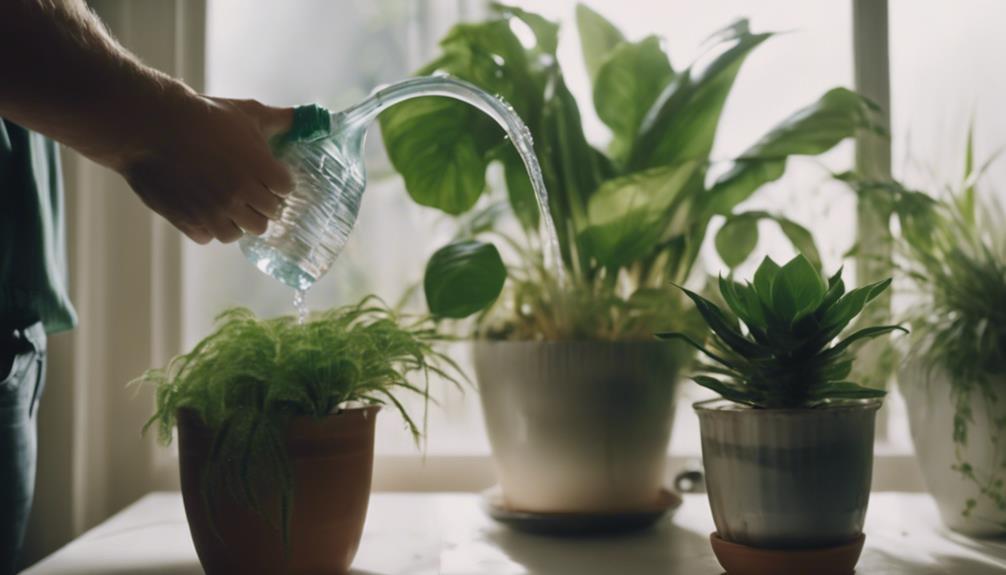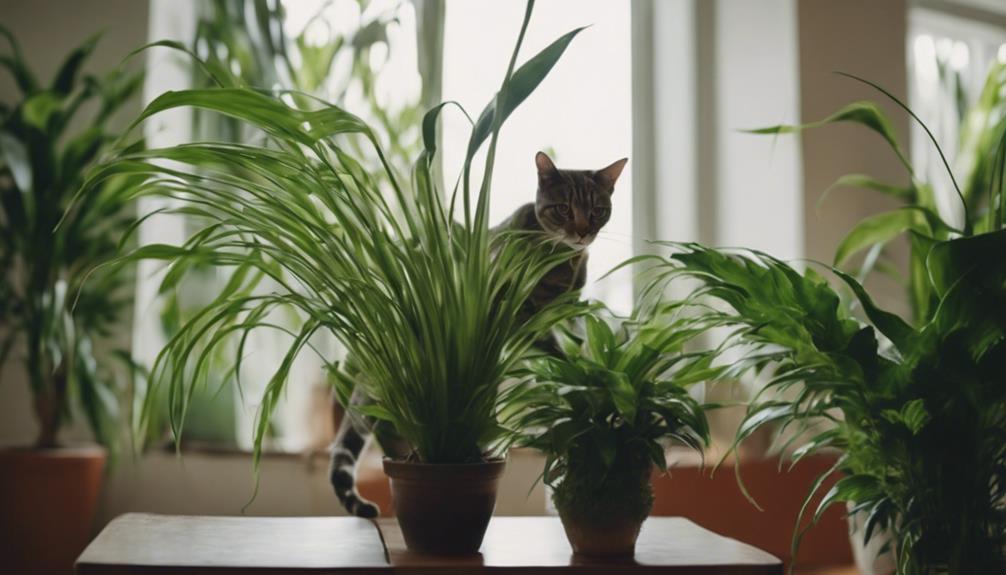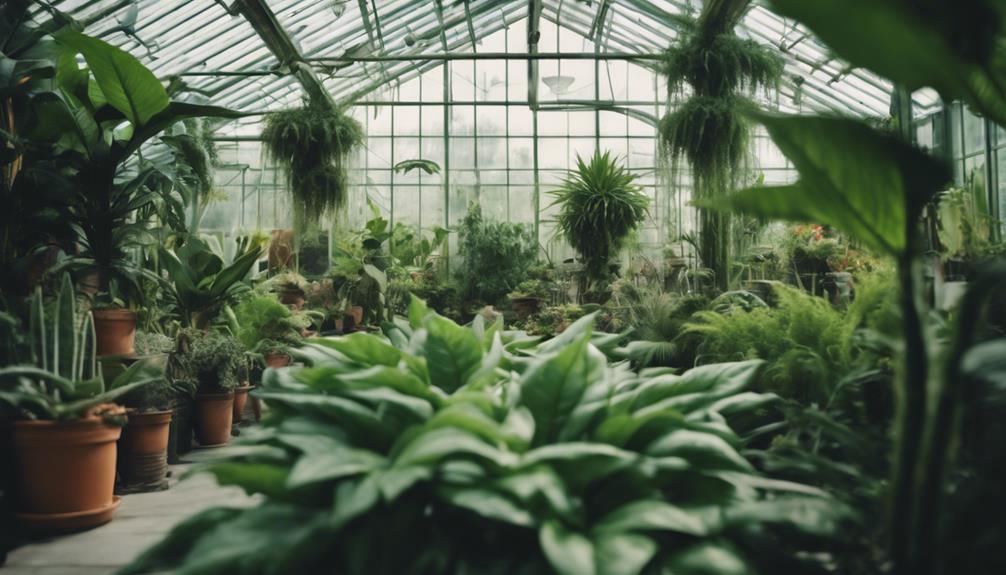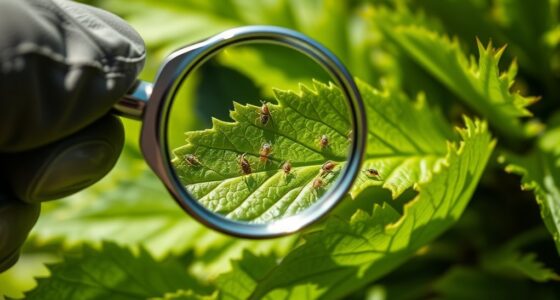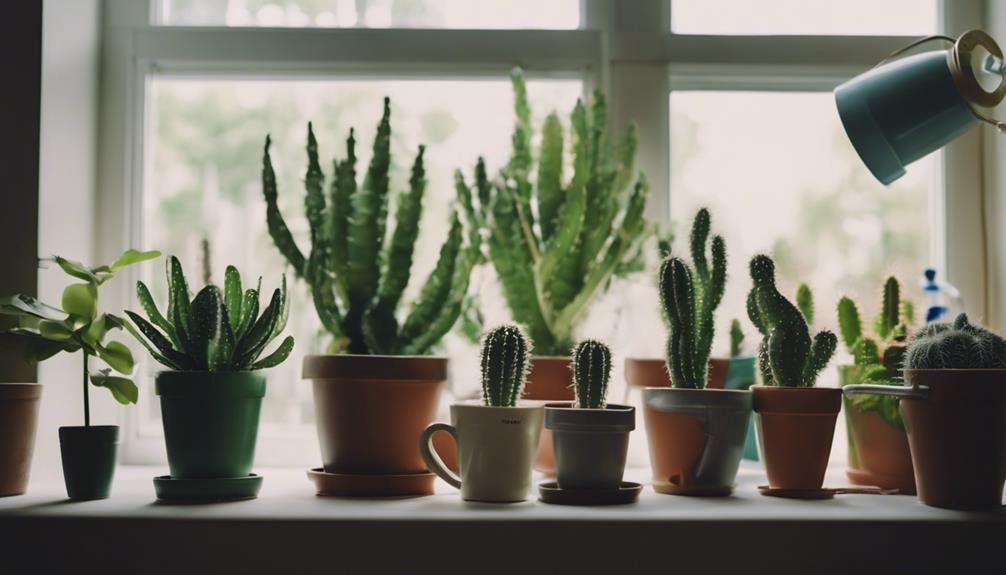When caring for XL houseplants, water them every 1-2 weeks to maintain health. Check soil dryness by inserting a finger 1-2 inches deep. Use pots with drainage holes to prevent overwatering. Consider environmental factors like humidity levels. Monitor soil moisture with tools like moisture meters for accuracy. XL plants need less frequent watering compared to smaller ones. Adjust watering based on plant cues and seasonal changes. Avoid waterlogging and root rot by ensuring proper drainage and aeration. Maintain ideal hydration levels for best growth. Following these tips guarantees your XL houseplants thrive.
Key Takeaways
- Use tools like QuenchPlant for accurate XL houseplant watering guidance.
- Adjust watering frequency based on soil moisture readings.
- Monitor soil moisture levels regularly to prevent overwatering.
- Consider environmental factors like humidity levels for proper hydration.
- Ensure XL houseplants receive adequate water without waterlogging.
Watering XL Houseplants: Essential Guidelines
Let's explore the essential guidelines for watering XL houseplants. When it comes to watering your plants, paying attention to the base of the plant is vital. Make sure that water reaches the base of the plant where the roots are located, as this is where the plant absorbs moisture and nutrients.
To determine when to water your XL houseplants, stick a finger 1-2 inches into the soil. If the top layer feels dry to the touch, it's time to water. This method helps prevent overwatering, a common issue that can lead to root rot in XL plants. Remember to choose pots with drainage holes to avoid waterlogged soil, which can harm the roots. Proper drainage is key to maintaining the health of your XL houseplants.
Monitoring the soil moisture levels regularly and adjusting the watering frequency based on factors like humidity, temperature, and sunlight exposure will help you keep your XL houseplants thriving. Using tools like a moisture meter or smart plant sensor can also provide accurate readings for when your plants need watering.
Factors Influencing Watering Frequency
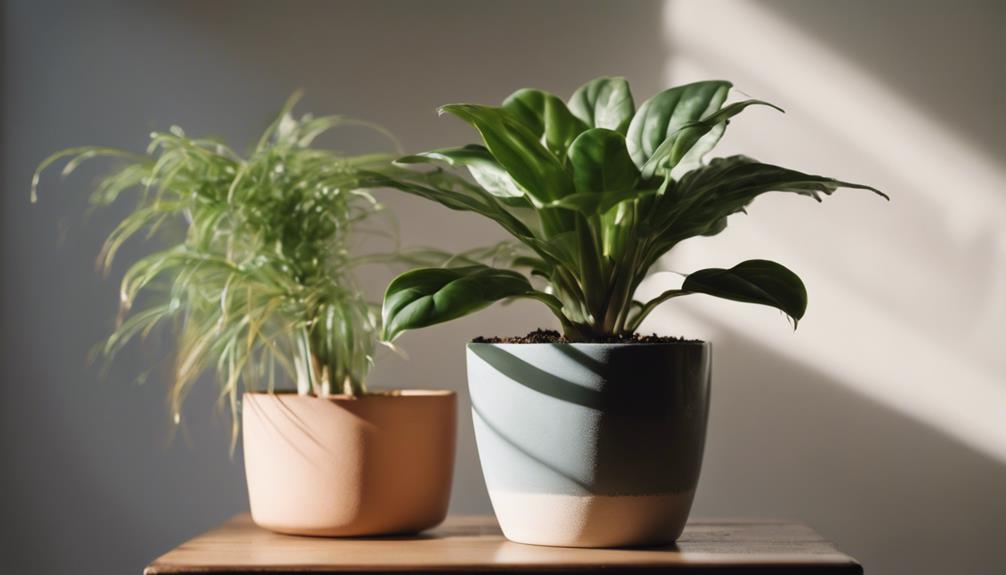
Understanding the various factors that influence watering frequency is essential for effectively caring for XL houseplants. Factors such as plant type, pot size, humidity levels, temperature, and season all play a role in determining how often your large houseplants need water.
Generally, larger houseplants require less frequent watering because they've a higher capacity to retain water compared to smaller plants. Conversely, XL houseplants in smaller pots may need more frequent watering as there's less soil volume to hold moisture.
Humidity levels are another important factor to take into account, as high humidity levels can reduce the frequency of watering required. It's important to monitor the soil moisture level regularly to make sure your XL houseplants are receiving the right amount of water.
Monitoring Soil Moisture Levels
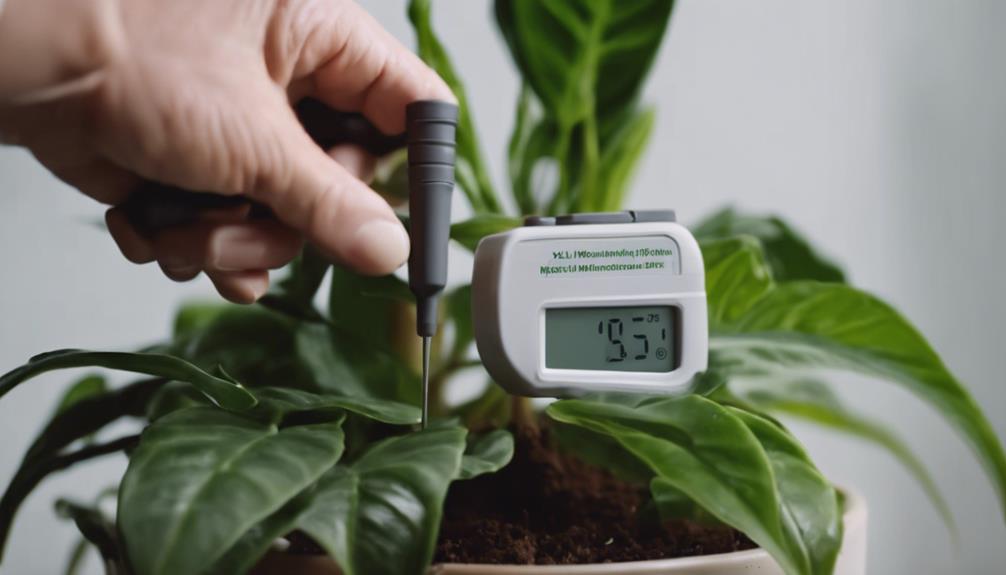
Monitoring soil moisture levels in XL houseplants is essential for ensuring proper hydration and overall plant health. Using a soil moisture monitor, such as QuenchPlant, can accurately assess the watering needs of large indoor plants. This tool helps prevent overwatering, which can lead to root rot and other issues, as well as underwatering, which may cause wilting and stunted growth.
By actively monitoring soil moisture, plant owners can maintain ideal hydration levels for their XL houseplants, promoting healthy growth and vitality. It's important to check the soil moisture regularly, especially in large pots where moisture levels can vary more significantly.
Using Moisture Meters Effectively
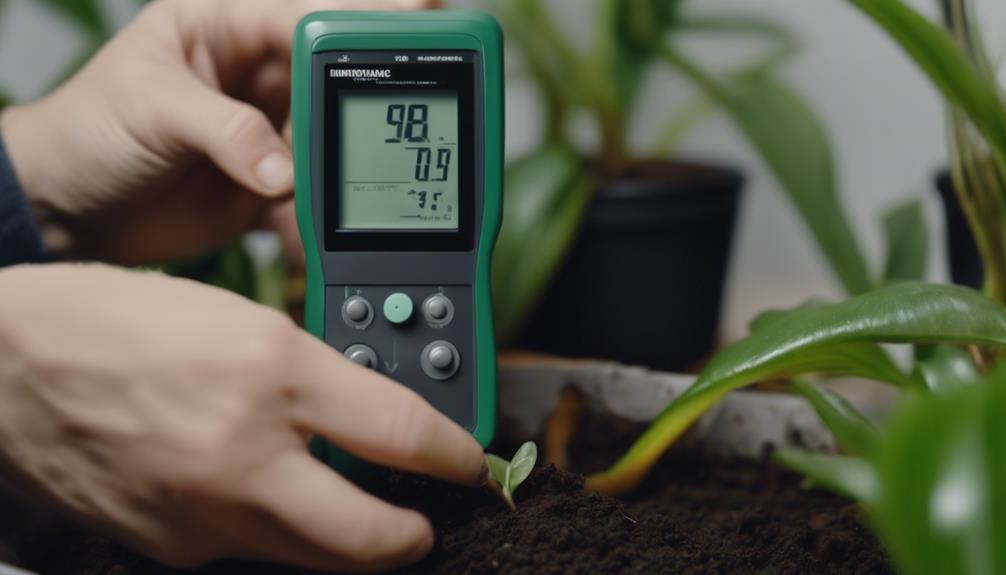
To effectively use moisture meters for XL houseplants, it's essential to understand proper usage techniques and how to interpret the readings accurately.
By inserting the moisture meter directly into the soil and noting the moisture level displayed, we can determine when it's time to water our large indoor plants.
Mastering the art of using moisture meters can greatly assist in maintaining a consistent watering schedule, promoting the health and vitality of our beloved XL houseplants.
Proper Moisture Meter Usage
When inserting the moisture meter probe into the soil near your XL houseplant's roots, make sure it's done accurately for reliable readings.
The moisture meter provides essential information about the soil's moisture level, guiding your watering routine. By consistently using the moisture meter, you can establish a suitable watering schedule tailored to your plant's needs.
Check the displayed moisture level on the meter to determine if your XL houseplant requires watering. It's important to wait until the soil reaches a specific dryness before adding more water, as indicated by the moisture meter reading.
Overwatering can be detrimental to your plant's health, so following the guidance of the moisture meter helps maintain ideal soil moisture levels. Proper usage of the moisture meter is key to ensuring your XL houseplant receives the right amount of water, promoting healthy growth and overall well-being.
Interpreting Moisture Meter Readings
As we assess the moisture meter readings for XL houseplants, understanding the scale and recommended moisture levels is essential for effective watering management.
Moisture meters play a vital role in providing accurate soil moisture information. By interpreting the readings based on the 'dry-to-wet' scale, we can determine when our XL houseplants require watering.
These meters help prevent the common pitfalls of overwatering or underwatering by offering real-time soil moisture data. Regularly checking the moisture meter readings allows us to adjust our watering frequency accordingly, ensuring our plants remain healthy and vibrant.
Remember to refer to the specific recommended moisture levels for your XL houseplants to maintain ideal growing conditions.
Adjusting Watering Schedule Accordingly
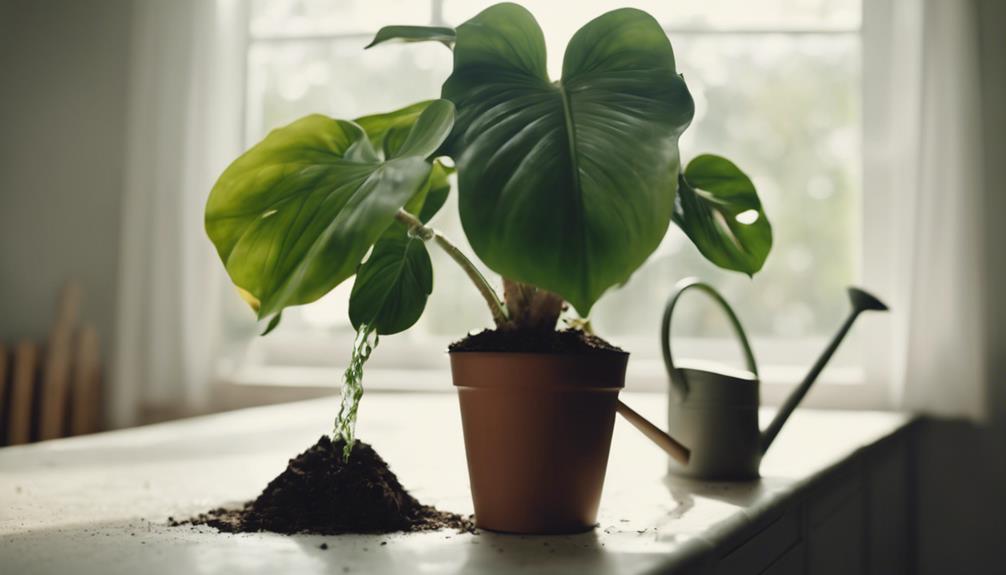
Let's adjust the watering schedule for XL houseplants based on soil moisture levels and plant response. To water our plants effectively, we need to modify the watering schedule according to the specific needs of XL houseplants.
Check the soil moisture by feeling the top few inches of soil; if it's dry, it's time to water. Consider using a moisture meter for a more accurate assessment to prevent overwatering. XL houseplants, with their larger size, may have deeper roots, so ensure thorough watering to reach all the roots effectively.
Keep a close eye on how your plants respond to these adjustments. Drooping leaves or yellowing can signal either overwatering or underwatering. Use these cues to fine-tune the watering schedule.
Preventing Overwatering and Underwatering
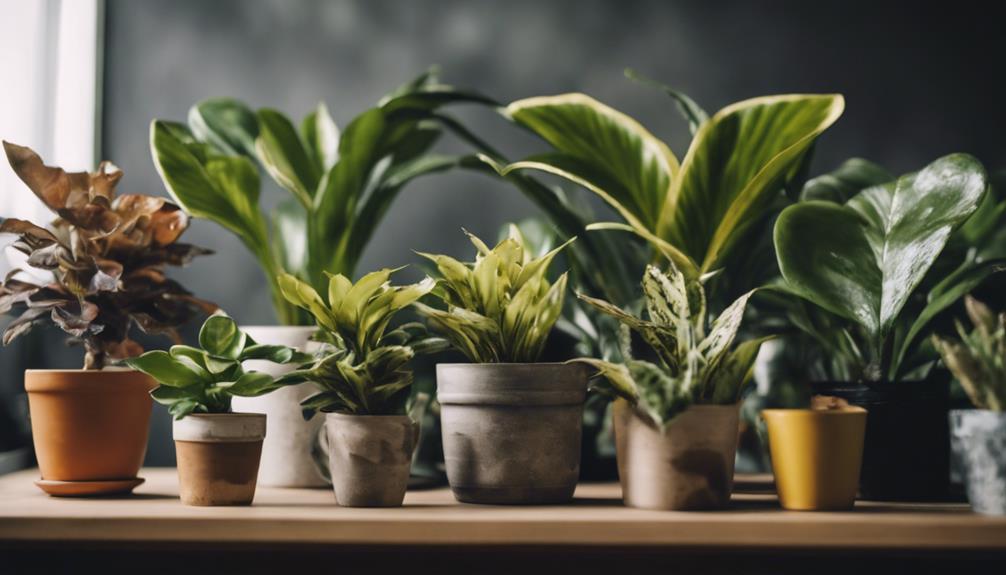
When caring for XL houseplants, it's important to strike a balance between watering too much and too little. Overwatering can spell trouble, leading to root rot and diseases, while underwatering can result in wilting and stunted growth.
Watering Frequency Tips
To prevent overwatering and underwatering, monitor the soil moisture levels of your XL houseplants using a moisture meter.
When determining the time to water your XL houseplants, keep in mind that they typically require watering every 1-2 weeks. However, factors such as plant type, pot size, and environmental conditions can influence this frequency.
Overwatering can lead to root rot, while underwatering can cause stress and wilting in XL houseplants. To gauge if it's time to water, utilize the 'finger test' by checking the top inch of soil for dryness before proceeding.
Additionally, adjust the watering frequency based on the season; XL houseplants may need more frequent watering in warmer months and less in cooler months.
Signs of Water Stress
Monitoring signs of water stress is essential to prevent overwatering and underwatering in XL houseplants. Overwatering can lead to yellowing leaves, wilting, root rot, and mold growth, while underwatering may cause drooping leaves, dry soil, leaf browning, and stunted growth. To help visualize these signs, we've created a table below:
| Signs of Overwatering | Signs of Underwatering |
|---|---|
| Yellowing leaves | Drooping leaves |
| Wilting | Dry soil |
| Root rot | Leaf browning |
| Mold growth | Stunted growth |
Ensuring Health and Growth of XL Plants

Maintaining the health and growth of XL plants requires a careful balance of proper watering practices and environmental considerations. When caring for these large houseplants, it's crucial to guarantee they receive adequate water without risking overwatering or underwatering.
Here are some key points to help you promote the well-being of your XL plants:
- Monitor Soil Moisture: Regularly check the top 1-2 inches of soil for dryness before watering your XL houseplants to prevent waterlogged conditions.
- Utilize a Moisture Meter: Invest in a moisture meter to accurately assess the water needs of your XL plants, ensuring they receive the right amount of hydration.
- Consider Environmental Factors: Take into account variables like humidity levels, pot size, and the specific requirements of the plant species when determining the water requirements for your XL houseplants.
Frequently Asked Questions
How Much to Water Large Indoor Plants?
When it comes to watering large indoor plants, the key is balancing hydration without drowning them. Factors like plant type, pot size, and environmental conditions influence the watering frequency.
To find the right balance, check the soil moisture regularly by sticking a finger in or using a moisture meter. Over-watering can cause root rot, while under-watering leads to wilting and nutrient deficiencies.
Adjust your watering routine based on specific plant needs to promote healthy growth.
How Much Water Does a Large Potted Plant Need?
When caring for large potted plants, the amount of water needed can vary depending on factors like plant size, soil type, and environmental conditions.
It's essential to water XL houseplants when the top 1-2 inches of soil feel dry. By ensuring thorough watering to reach the plant's deep roots, we support healthy growth.
To gauge watering needs accurately, consider factors such as pot size, plant type, humidity levels, and seasonal changes.
How Do I Know How Much Water to Put in My Plants?
When determining how much water to give your plants, consider their specific needs based on size, type, and environment.
Check soil moisture regularly by feeling it with your finger or using a moisture meter.
Adjust watering frequency based on growth stage, season, and temperature.
Guarantee proper drainage in the pot to prevent root rot.
How Much Water Should I Give My Plant Each Day?
When it comes to watering plants, it's important to strike a balance. Overwatering can drown roots, while underwatering causes stress.
XL houseplants generally need watering when the top 2-3 inches of soil are dry. Factors like plant type, pot size, and environmental conditions influence watering frequency.
Using a moisture meter can help you accurately gauge your plant's water needs. Remember to adjust watering schedules seasonally to keep your plant healthy and happy.
What Are Some Effective Methods for Watering XL Houseplants?
For XL houseplant hydration, a cheat sheet can be a lifesaver. Consider using a drip irrigation system to ensure consistent watering. Alternatively, try a moisture meter to accurately gauge the moisture levels of the soil. Grouping plants with similar water needs together can also simplify your watering routine.
Conclusion
In summary, proper watering is essential for the health and growth of XL houseplants. Did you know that overwatering is one of the most common causes of plant death, with 90% of plant problems being related to watering issues?
By monitoring soil moisture levels, using moisture meters, and adjusting your watering schedule accordingly, you can prevent overwatering and underwatering, ensuring your plants thrive.
Remember, a little attention to watering goes a long way in keeping your XL plants happy and healthy.
